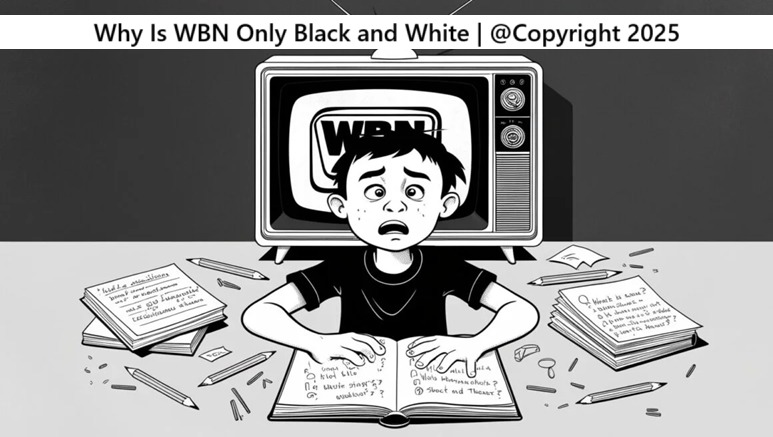Why Is WBN Only Black and White?
Have you ever wondered why “WBN” is only presented in black and white? Whether you’re a fan of retro aesthetics, a curious onlooker, or someone who stumbled across this mystery while surfing the internet, you’re in the right place. This article will uncover the reasons behind this unique artistic choice and explain why it works so well. Let’s dive in!
The Origin of WBN: A Black-and-White Legacy
WBN, which stands for “Werewolf by Night,” is a Marvel Studios’ special presentation that premiered in 2022. The story pays homage to classic horror films, but the choice of black and white isn’t just for show—it’s a deliberate decision rooted in tradition.
The black-and-white aesthetic takes viewers back to the golden age of horror, a time when films like Dracula (1931) and Frankenstein (1931) ruled the silver screen. During this era, filmmakers didn’t have the luxury of color technology, and audiences embraced the eerie, shadowy visuals of monochrome cinema. By adopting this style, WBN pays tribute to that legacy while creating a sense of nostalgia.
Embracing the Horror Genre’s Roots
Why Horror Feels Right in Monochrome
Horror movies thrive on atmosphere, and nothing sets the mood quite like the stark contrasts of black and white. The absence of color amplifies tension, focuses attention on the interplay between light and shadow, and gives the visuals an otherworldly quality. It’s why some of the most iconic horror scenes in history—a flickering candle, a creeping silhouette—still hold up today.
By sticking to black and white, WBN leverages this time-tested formula to create an immersive and spooky experience. The lack of color forces the audience to focus on the story, the characters, and the suspenseful moments without distractions.
Practical Reasons for the Black-and-White Choice
Hiding Special Effects Flaws
Black and white isn’t just about aesthetics; it’s also practical. Modern audiences expect high-quality visuals, but when you’re dealing with monsters and supernatural elements, sometimes it’s better to leave things to the imagination. Monochrome helps mask imperfections in special effects and makeup, making them appear more convincing.
For example, a werewolf transformation scene—a staple of this genre—can look awkward if the CGI or prosthetics aren’t perfect. The muted palette of black and white softens these transitions, making the effects feel more seamless.
Simplifying Lighting and Cinematography
Black and white also allows for greater control over lighting. Without the need to balance a wide range of colors, cinematographers can focus on creating dramatic contrasts and eerie silhouettes. This approach makes the scenes more visually striking and emotionally engaging—exactly what a horror story needs.

The Role of Nostalgia in Storytelling
Capturing the Magic of Old-School Cinema
Let’s be honest—a big part of WBN’s charm is its ability to transport us back in time. For fans of classic cinema, the black-and-white aesthetic feels like a warm nod to a bygone era. It’s a love letter to the films that inspired generations of horror enthusiasts and filmmakers.
This nostalgic appeal isn’t just for older viewers. Younger audiences, too, appreciate the novelty of black and white in a world dominated by hyper-realistic, CGI-heavy blockbusters. It’s a refreshing change of pace that stands out in today’s entertainment landscape.
Black and White as a Storytelling Tool
Setting the Mood
Color can be a powerful storytelling tool, but sometimes less is more. By stripping away the color, WBN directs the viewer’s focus to the raw emotions of the characters and the eerie atmosphere of the setting. The stark contrasts between light and shadow enhance the tension, creating a sense of unease that keeps viewers on the edge of their seats.
Enhancing the Themes
The monochrome palette also complements WBN’s themes of duality and transformation. Black and white symbolize opposites—good and evil, light and dark, human and monster. This visual metaphor reinforces the story’s central conflicts and adds depth to the narrative.
Modern Interpretations of Black and White
Breaking the Mold in a Colorful World
In an era where vibrant, high-definition visuals dominate, WBN’s black-and-white style is a bold choice. It challenges the norm and proves that old techniques can still feel fresh and innovative. This decision aligns with a growing trend in filmmaking, where directors are revisiting classic styles to create unique visual experiences.
Films like The Lighthouse (2019) and Mad Max: Fury Road—Black & Chrome Edition have shown that monochrome visuals can captivate modern audiences. WBN joins this elite group, using black and white not as a limitation but as a creative advantage.
Conclusion: Why Black and White Works for WBN
The decision to present WBN in black and white is far from arbitrary. It’s a carefully considered choice that serves multiple purposes: paying homage to classic horror films, enhancing the mood, and simplifying visual effects. The result is a unique and engaging viewing experience that stands out in today’s entertainment landscape.
WBN’s black-and-white aesthetic isn’t just a stylistic gimmick—it’s a storytelling tool that deepens the narrative and elevates the horror genre. By embracing the past, it creates something timeless, proving that sometimes, old-school is the best school.






